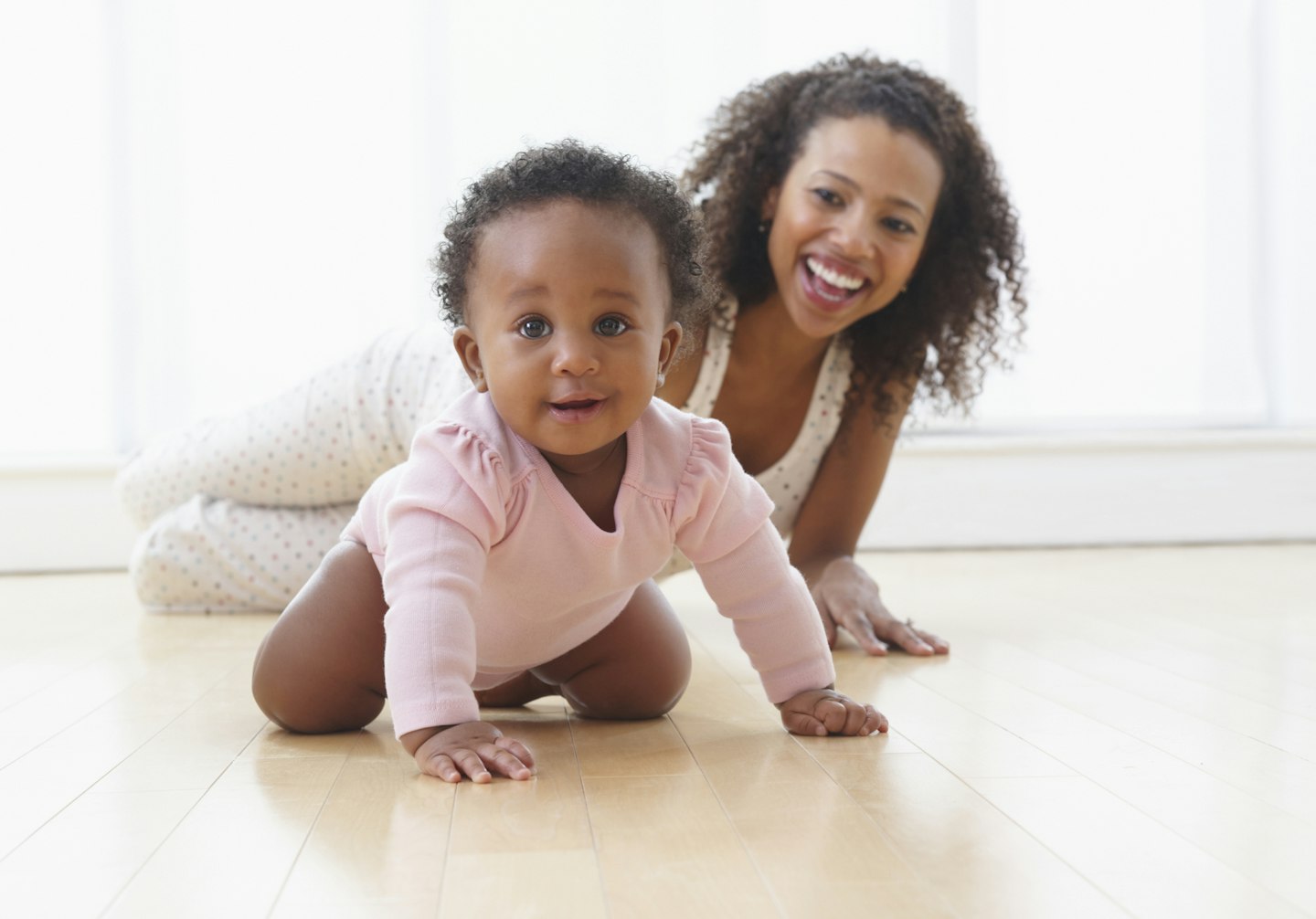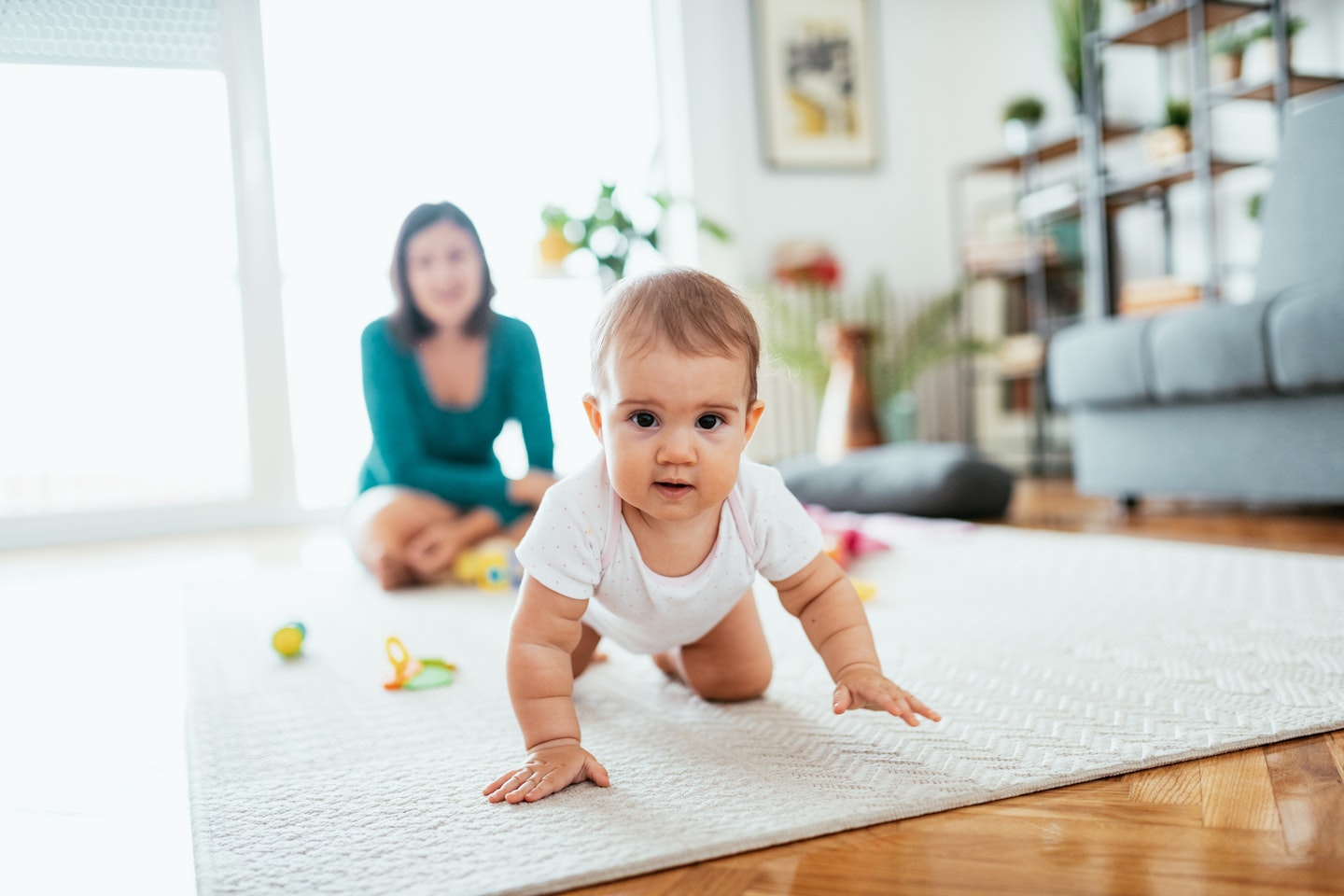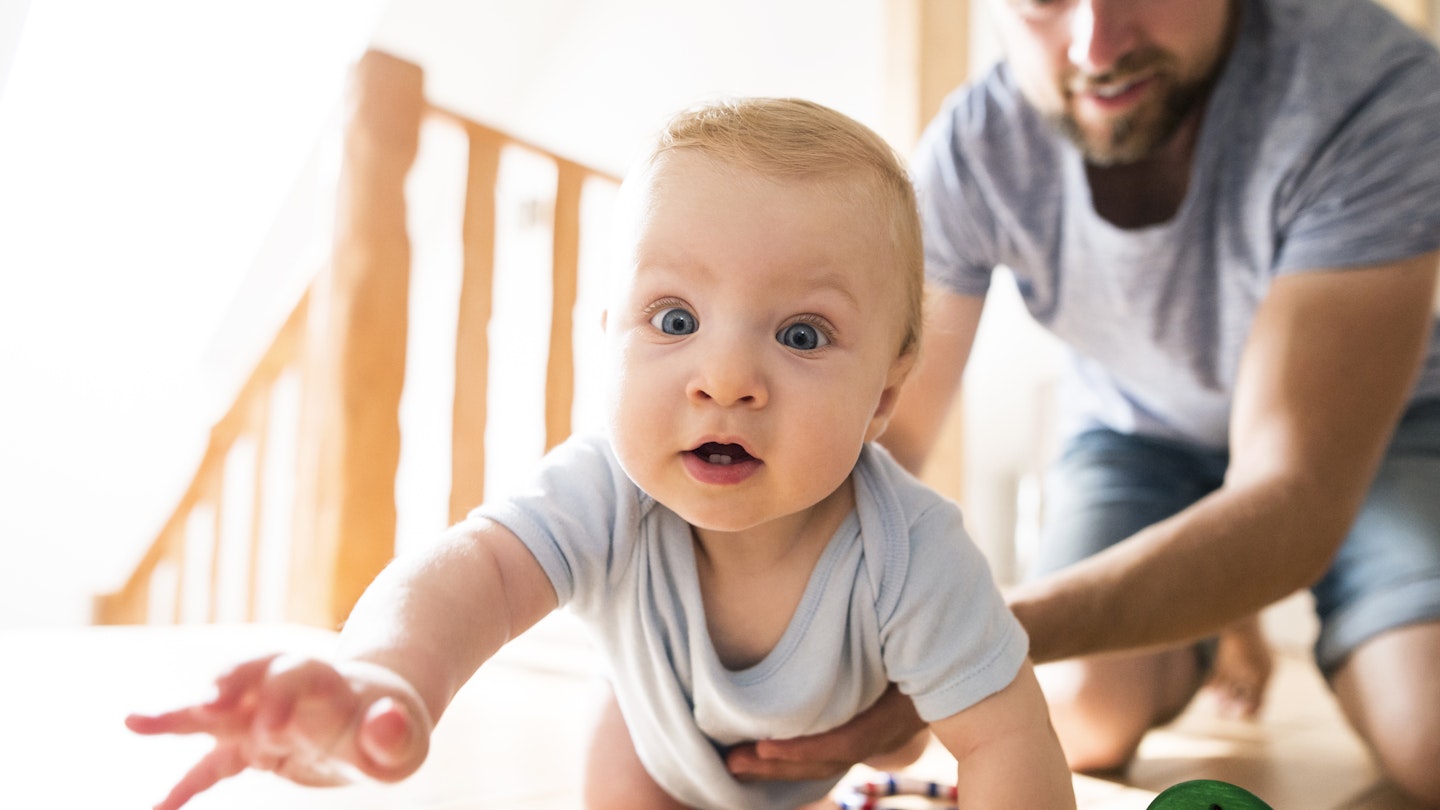Watching your little one grow and reach new baby milestones in their life is incredibly heartwarming. The first few months of babyhood go by so quickly, and before you know it, you can see those little legs getting eager to move, so it's natural to wonder when do babies crawl.
It may feel like only yesterday when you were counting down the days until your baby would sit up, but now that they're crawling, they're rapidly exploring everything in the room and you'll soon find that you need to move almost everything out of their reach. If you're at this stage, a baby playpen could be a life saver as it can become their own little world of fun, enclosed in a safe space.
If you think your baby is ready to crawl, or if you're just wondering when they'll start, here's what you need to know about when babies learn how to crawl and what you can do to encourage them, with expert advice from Dr Sanjeev Kalia - a Clinical Director, General Practitioner, author, and dad of two.
What age do babies start to crawl?
Most babies start to crawl between seven and 10 months old after they've learned to sit up. If you're wondering when do babies crawl, the nine-month-old mark is the average age for little ones to crawl, but it might take some babies longer to learn to crawl or they might skip the phase entirely and start pulling themselves up to learn how to walk.
Dr Kalia adds that although most babies start to crawl at about eight months, a few weeks either side of this timescale is perfectly normal. "Some may even have a variation on crawling by bottom shuffling or even get on all fours but then refuse to move as they learn how best to crawl without hurting themselves," he says.

Tips to encourage your baby to crawl
While you can't teach a baby how to crawl, you can encourage them to reach this developmental milestone in a few different ways. These steps are great for helping your baby to crawl.
1) Give them plenty of tummy time
Tummy time is important for a baby's development as it helps to strengthen their muscles. Give your little one plenty of supervised tummy time play, as this will help them develop the strength to crawl and roll over by using their arms, legs, and head control.
2) Make sure there's plenty of space
Child-proofing is very important, especially when you think your little one is getting ready to start moving. Make sure there's plenty of space for your little one to move around and move any potential safety hazards out of the way, such as coffee tables and ornaments.
3) Encourage them to reach for toys
Lay interesting toys near your baby when they're doing tummy time to encourage them to reach out. Toys that move and make noise are great to use to attract your little ones' attention, and they will eventually start moving towards them.
4) Help them to move
When your little one is just learning to crawl, a good way of helping them is by putting the palms of your hands against their feet so that they can push off against them. It's a great way to help them get control of their movement, and once they realise they can move forward, they'll start pushing their feet against the ground to crawl.
"The main thing to remember is to not put too much stress on the little one," Dr Kalia says. "Gently encourage them by giving them positive indicators like smiling as they take their first strides. You might want to sit slightly away from them when they get on all fours and extend your arms to ensure they are motivated to move. If these measures do not immediately work it is not the end of the world and just keep positive. A lot of babies can be encouraged to crawl by doing tummy time, and then gently help them shift their weight form side to side so they learn how to distribute their weight from one limb to another. As they grow in confidence, they will start to move by themselves. Also make sure you avoid slippery floors as they can cause the child to stumble. Using a mat will help their grip and posture."

Baby crawling styles
Starting to crawl is a huge deal for your tot - and each baby has a different way of doing it. From the crab crawl to the bottom scoot crawl, see if you recognise your baby's technique...
The classic crawl: Baby alternates arms and legs, getting the arm on one side to hit the floor at the same time as the leg on the opposite side.
The belly crawl: Also known as the commando crawl. About half of all babies begin crawling by keeping their tummy against the floor as they move. Belly creepers usually begin crawling earlier than four-on-the-floor crawlers because they don't get up on their hands and knees, which requires greater strength and balance. Some babies use belly crawling as their only method of crawling until they learn to walk; other babies shift to the classic crawl before they start walking.
The bear crawl: Baby walks on all fours, arms and legs unbent.
The crab crawl: Baby pushes with arms instead of pulls which has the unintended, and frustrating, consequence of sending baby backwards.
The leapfrog crawl: Baby makes a bridge with their arms and legs and then thrusts forward.
Rolling: Some babies get so good at rolling that it becomes their primary way to get around.
"All babies learn at different speeds and using different methods," says Dr Kalia. "Some will merely bottom shuffle, others will use their upper arms to drag themselves, and some will do a perfect natural crawl. It’s all about them learning how to move and avoid hurting themselves in the process. As they become more and more comfortable and confident in their ability to shift their weight and use their arms and legs, they will be able to crawl without any encouragement."

Crawling safety
Once your baby is on the move, you'll need to ensure their new world is ready to explore safely. "When your child first begins to crawl it can be very exciting, but soon that excitement turns to anxiety when you realise all the stuff they can now mobilise to and possibly hurt themselves in the process," says Dr Kalia.
That's why it's so important to baby-proof your home at this stage of your child's development. It might sound strange but some parents find it useful to get down on all fours and move around their house so they can see everything as their baby does and what obstacles they might come into contact with.
As with everything, you'll need to keep a close eye on your little adventurer at all times, even more so now they're on the move as it's unlikely they will want to sit still in one place.
"Always be proactive when assessing an area for any dangers that might lie for a child that can move around," Dr Kalia advises, "such as obstacles that can fall on them, or bookshelves they can try to use to pull themselves up and possibly pull on themselves when trying to stand. Make sure you buy good soft covers for hard corners. Accessible cables are another potential hazard as children can drag lamps, computers, all sorts of stuff, so ensure they are tucked away and out of reach. Plug sockets are another concern and you can buy some covers to prevent kids getting their hands on them. Stair gates are an essential purchase once a child can mobilise to ensure the child is safe. Remember to check the dimensions of any you purchase as they can be expensive and you wouldn’t want to waste money on ones that the child can easily push away or manoeuvre around."
What if my baby doesn't start crawling?
The important thing to remember is that all babies are different. Some start crawling as early as six months old while others might not crawl at all and could just go straight to walking. Don't push your little one to crawl if they aren't ready as it can slow down development; gentle encouragement when they show they're ready will help them figure it out.
"All children develop this skill at a slightly different rate," Dr Kalia reiterates. "Some children seem to skip crawling altogether and go from pulling themselves to attempting to walk. If your child has shown no interest in crawling around eight months then discuss this with your health visitor or GP."
About the expert
Dr Sanjeev Kalia is an experienced NHS General Practitioner who has worked as partner at three different surgeries in the Midlands over the past nine years. In each of his surgeries he has been the lead for newborn baby health screening known as the ‘6-8 week check’. Dr Kalia has a strong interest in medical education and encourages patients to be empowered to self-manage their care through media such as apps and online platforms. He works as a GP trainer and for many years as a tutor to medical students as well as holding an interest in digital healthcare. He is also the founder of the baby burp cloth innovation, Avi Bear.
Emily Gilbert is a Digital Writer for Mother&Baby and has written for the website and previously the magazine for six years. Specialising in product reviews, Emily is the first to know about all the exciting new releases in the parenting industry.
